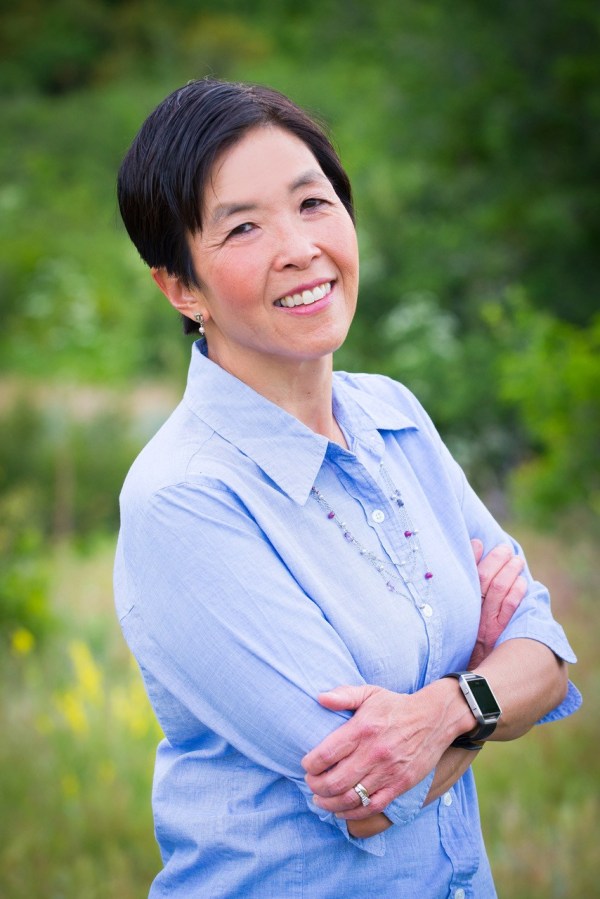We finally went ashore on the third day of our Virgin Voyages cruise on Scarlet Lady and explored the area that gives the itinerary its name, Mayan Sol.
RAS and I could have done a beach day, or a Mayan wellness retreat or tooling around on ATVs through the jungle. But since we like to learn about the local culture on our travels as much as possible, we chose a shore excursion (or “Shore Thing,” as Virgin calls it) to Chaccchoben, which means "place of the red maize (corn)" in Mayan.
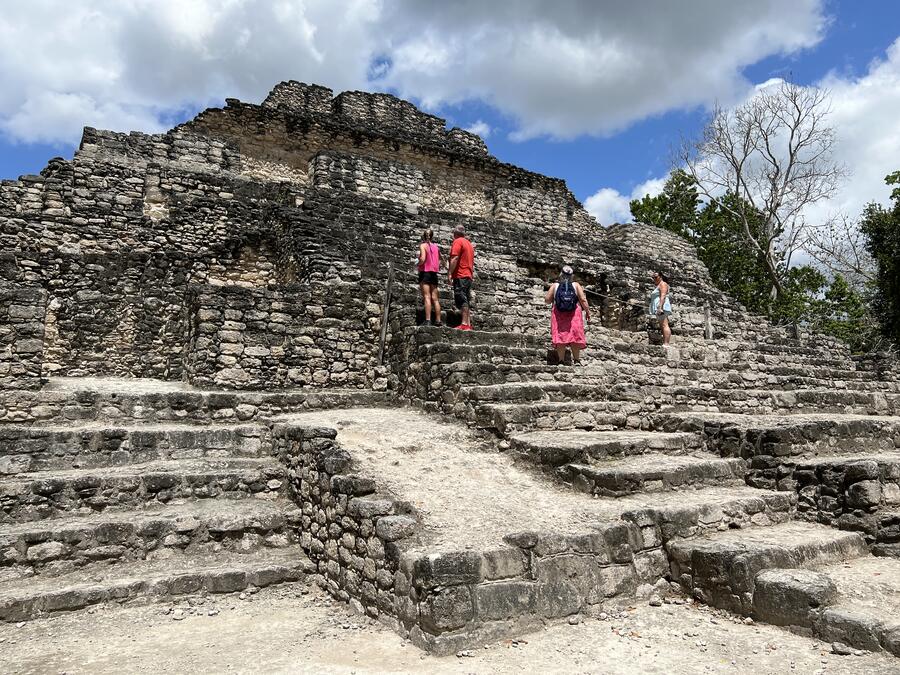
Some history of Chacchoben
This ancient site is relatively new as far as public viewing goes. Of course, it’s been around for at least several millennia, with the Mayan civilization culturally thriving until the time of the Spanish conquest of Mexico. Further government intervention in the mid-nineteenth century drove the Mayans further south into present-day Belize and Guatemala, although they remain a strong community presence in the Yucatan area.
The ruins themselves were only discovered in the early 1970s, when an American archeologist befriended a local Mayan farmer and documented the Chacchoben site. The development of this area of Quintana Roo paralleled this event, as the Costa Maya was remote, receiving few outside visitors and almost no tourists.
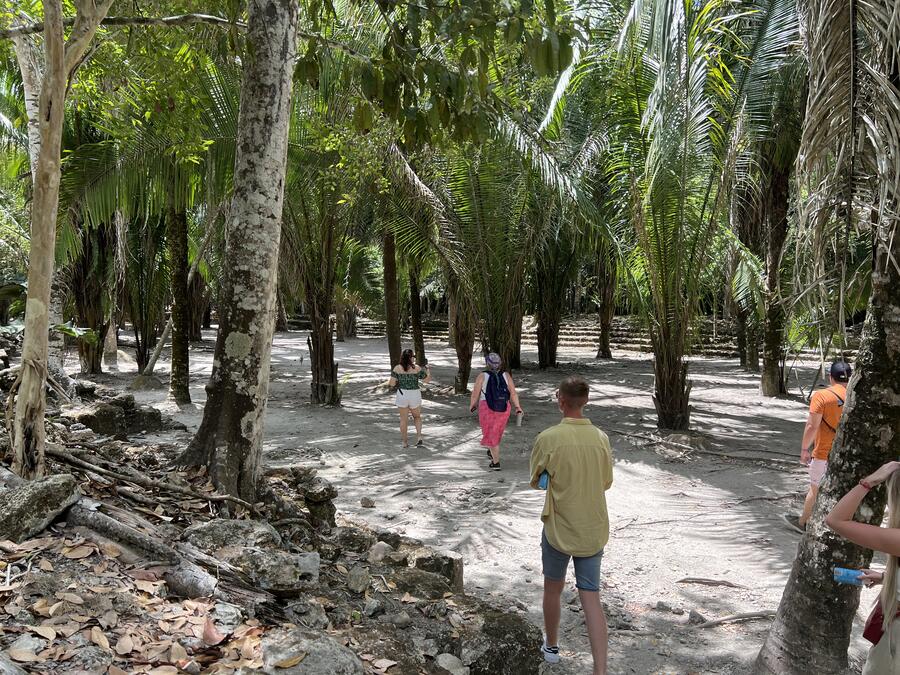
Chacchoben today
Even now, the Costa Maya is mostly free from the overdevelopment that characterizes its northern neighbors, Cancun and the Riviera Maya. The town of Mahahual was relatively quiet as we drove through it on the straight-arrow roads on the pancake-flat land to the Chacchoben ruins.
Our guide Diego provided us with a lively narrative of Mayan history and culture. He explained the whole calendar controversy and the proposed end of the world in 2012, which was essentially a misinterpretation of the details. But it made for a silly disaster movie.
An hour later, we arrived at the Chacchoben ruins site. The visitors center has a small food stand and Mexican themed items that visitors can find in any souvenir store in the country, so we skipped that completely.
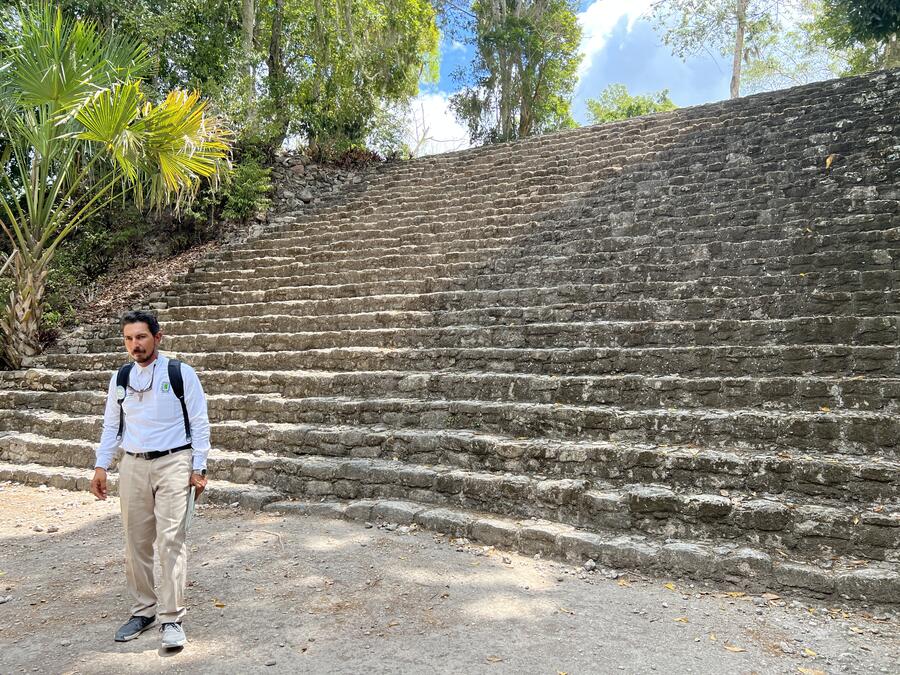
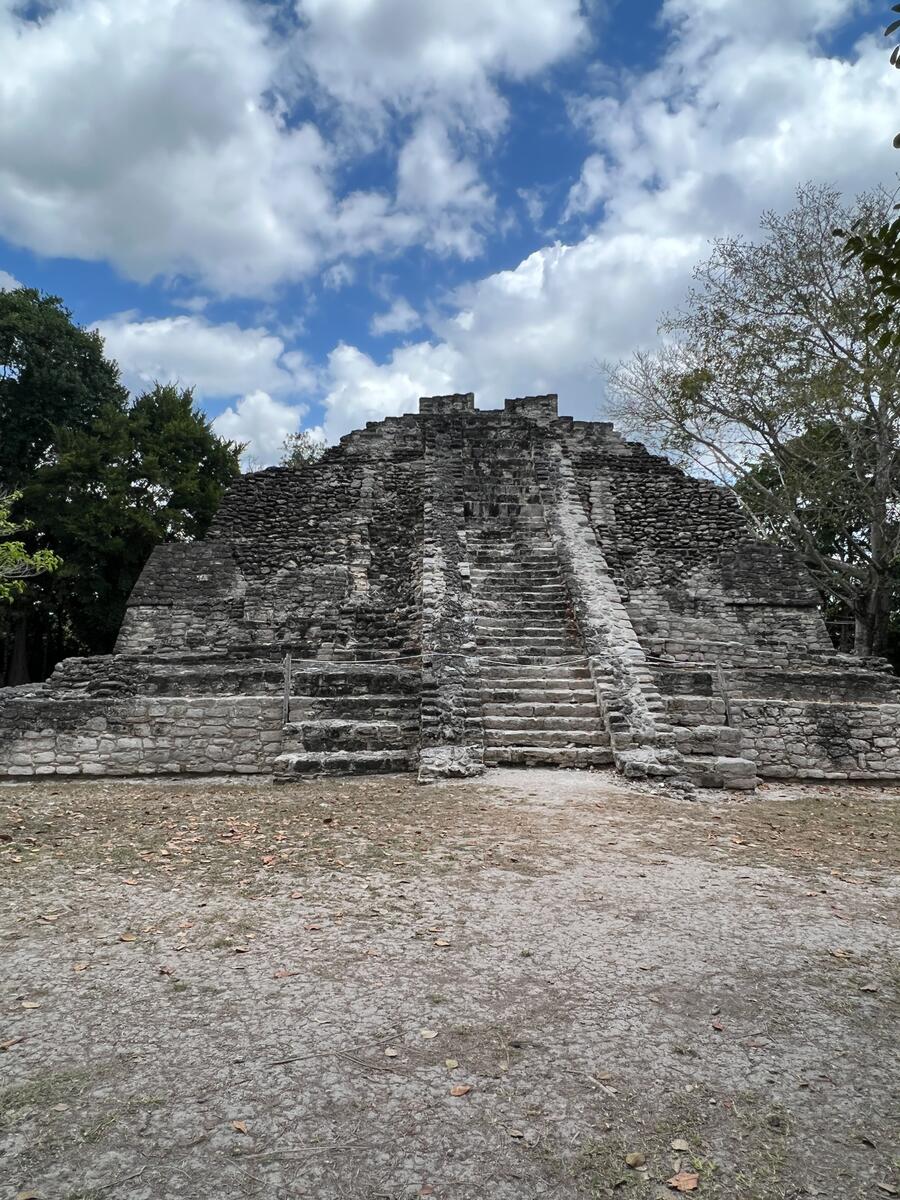
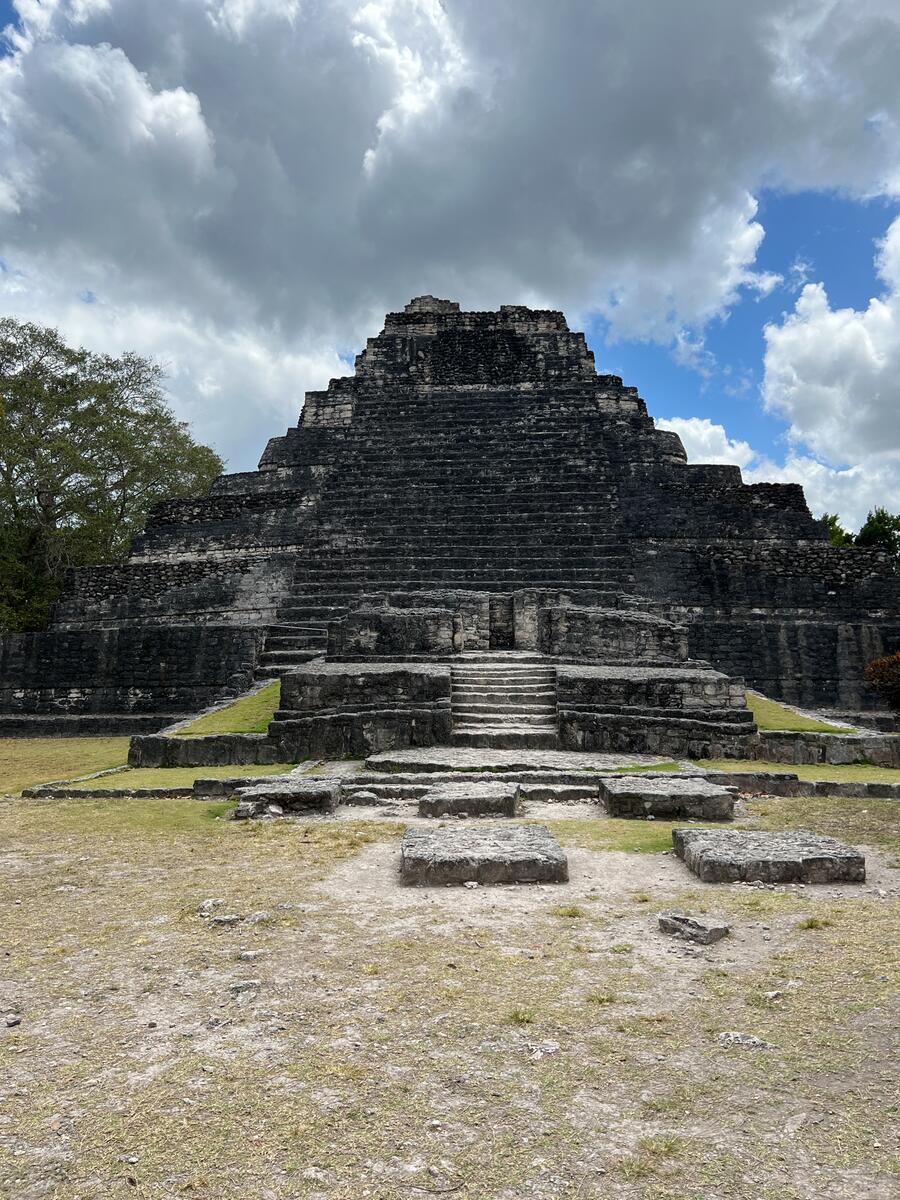
A place of sacrifice, ritual and celebration
We walked around three different pyramid structures that were primarily used for religious rituals and celebrations. The tallest of these hosted human and animal sacrifices and blood-letting ceremonies as an obligation to their gods. But most of them were used for festivals, where the ruling class and the lower classes could all participate.
Unlike Egyptian pyramids, the Mayan structures were completely solid, which made them some of the most elaborate platforms anywhere.
Visitors aren’t allowed to climb the pyramids themselves, but we did get to scale the stairs to two of them on a mesa. It was a little dangerous and steep but nothing most people can’t handle.
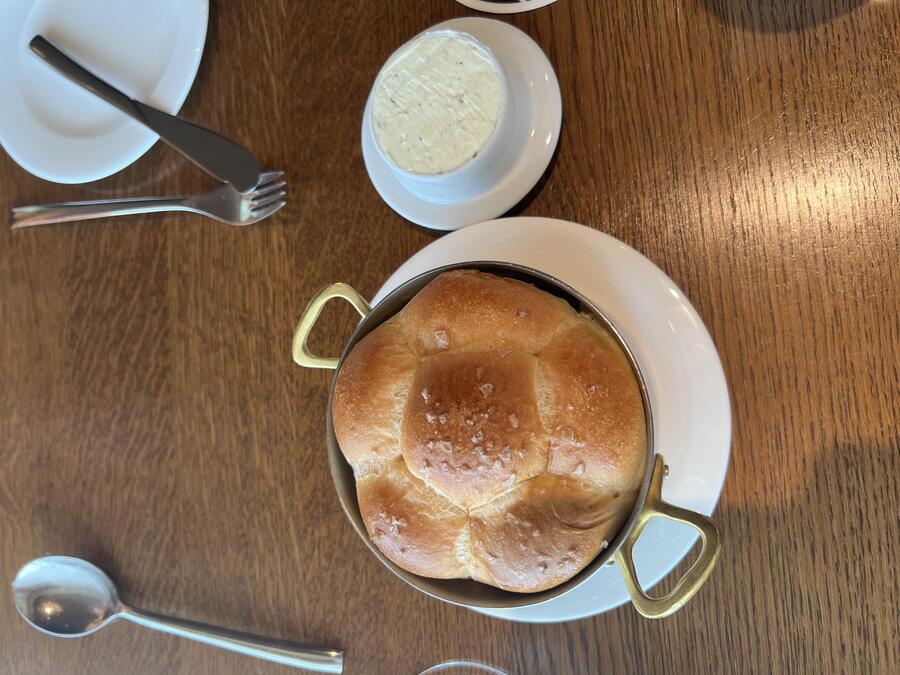
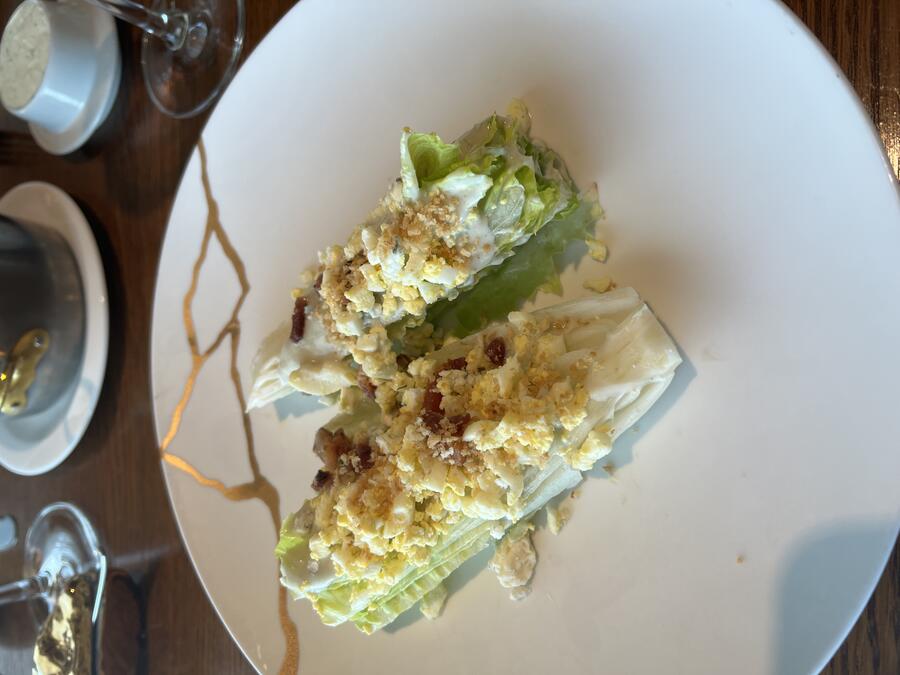
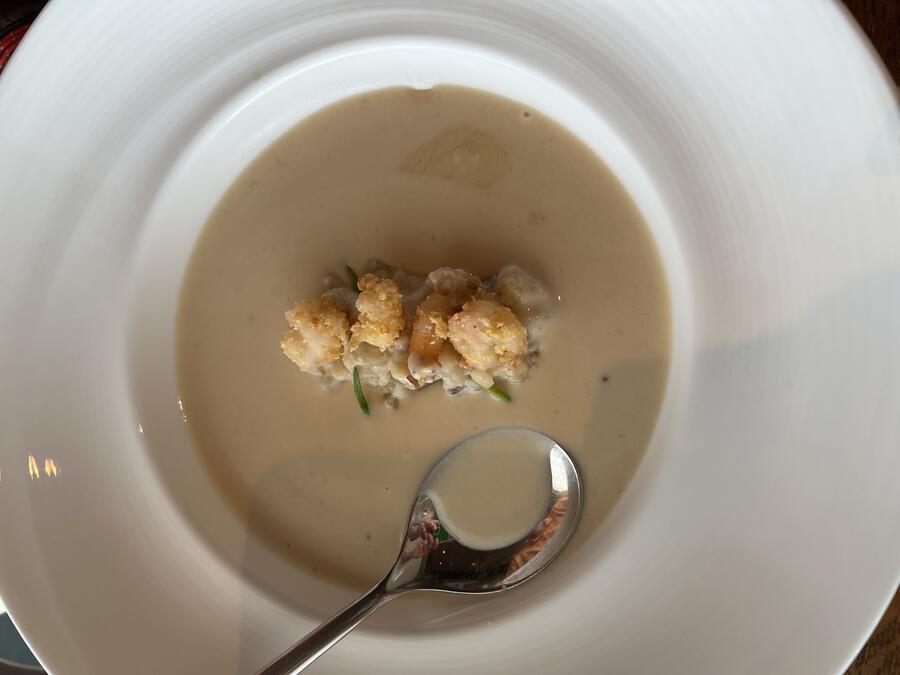
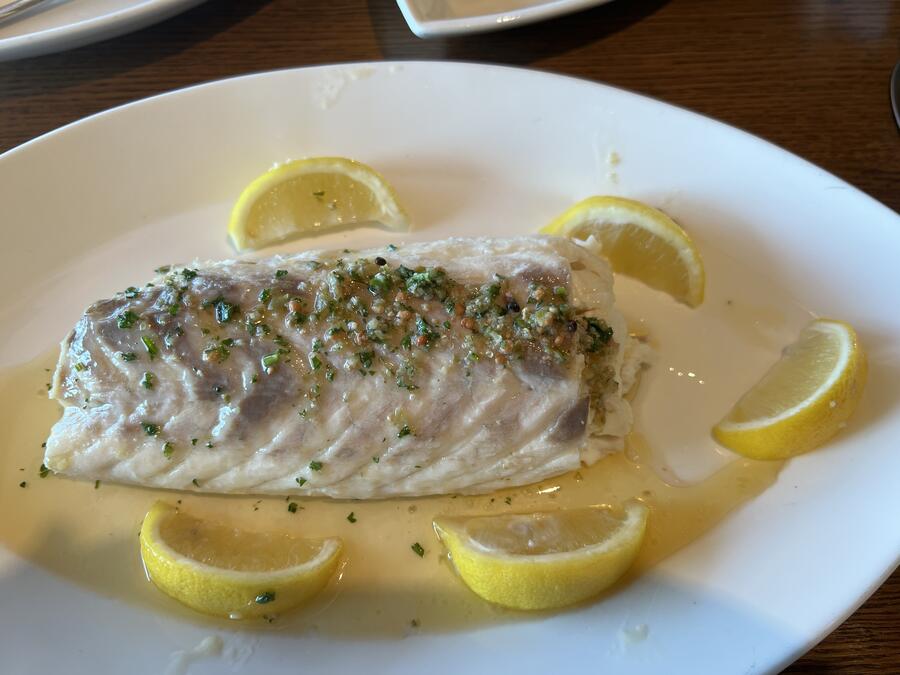
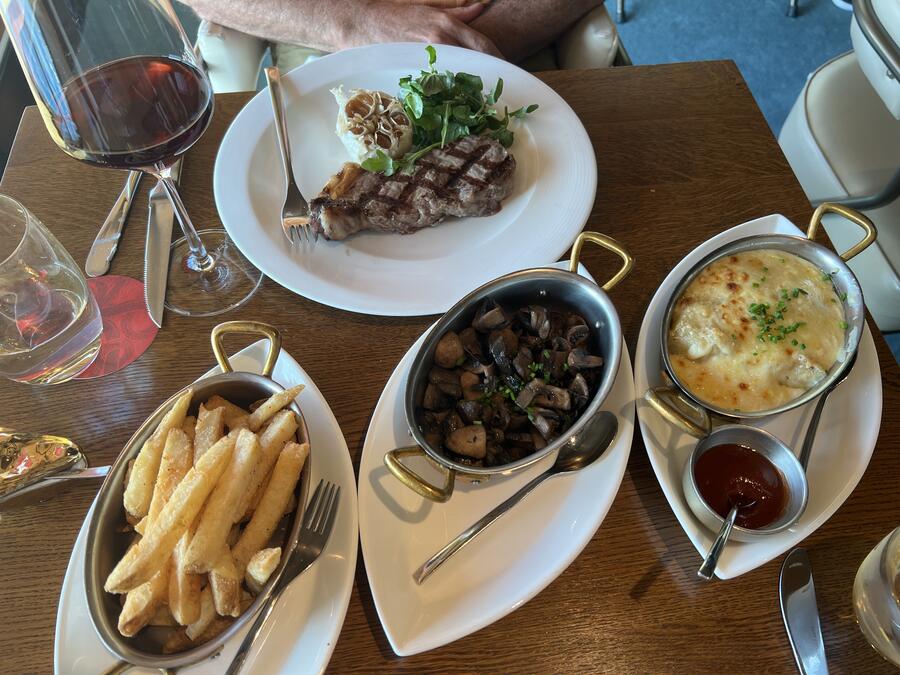
Back at the ship
Later in the evening, we enjoyed dinner at the Wake, Scarlet Lady’s steak and seafood restaurant. RAS naturally had a steak, while I ordered a salt-crusted dorade. It was prepared in a salty crust, which was then removed to reveal a large white fish fillet. It must have been about 8 to 10 ounces, and I couldn’t finish it. But that was probably because we also had salad starters and three filling side dishes.
Tomorrow I’ll write about the last two days on the cruise – another sea day and a stop at Bimini in the Bahamas.
